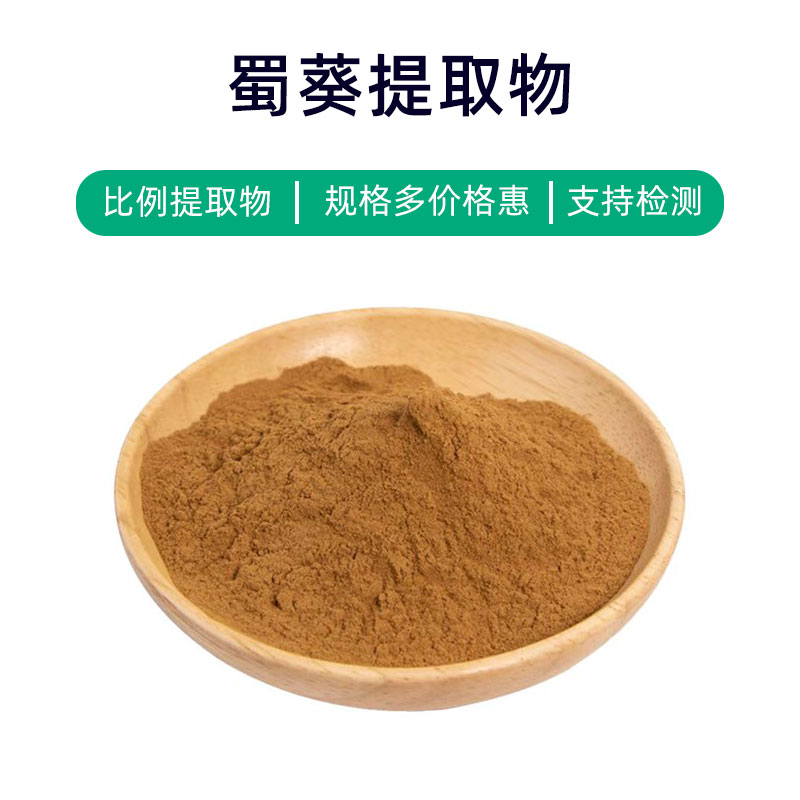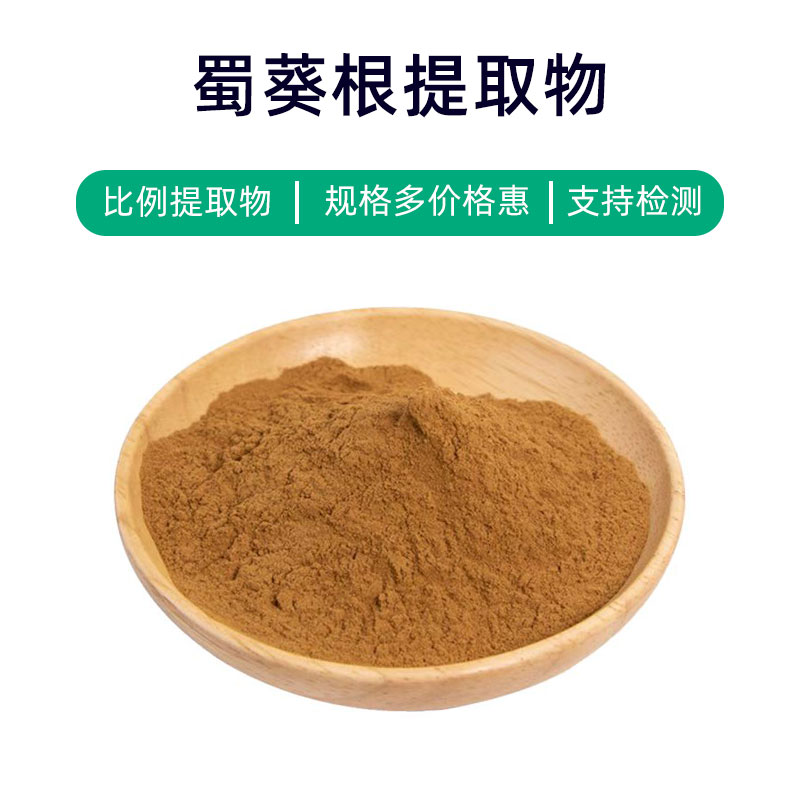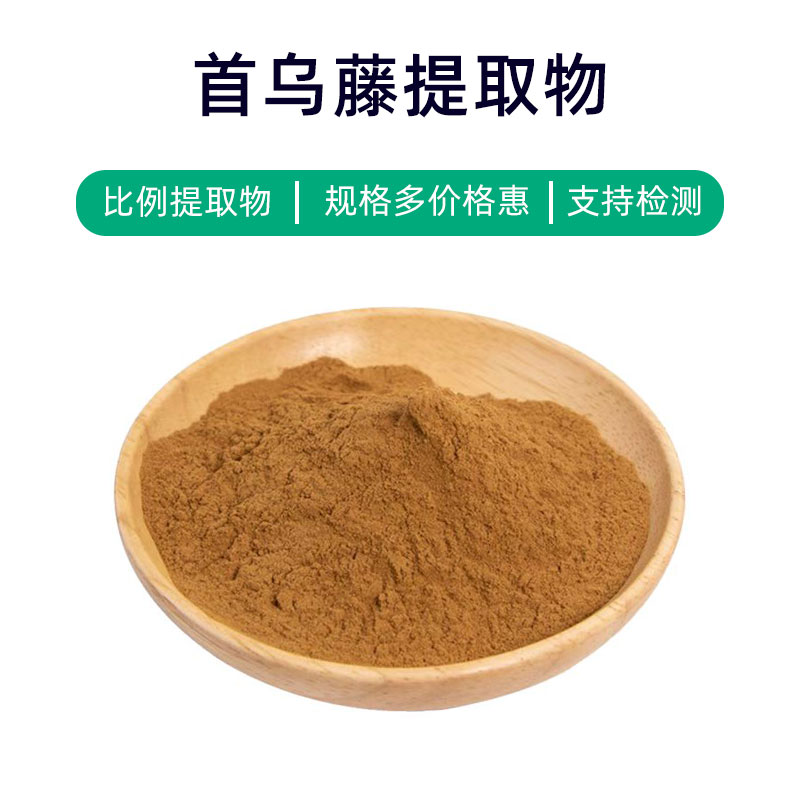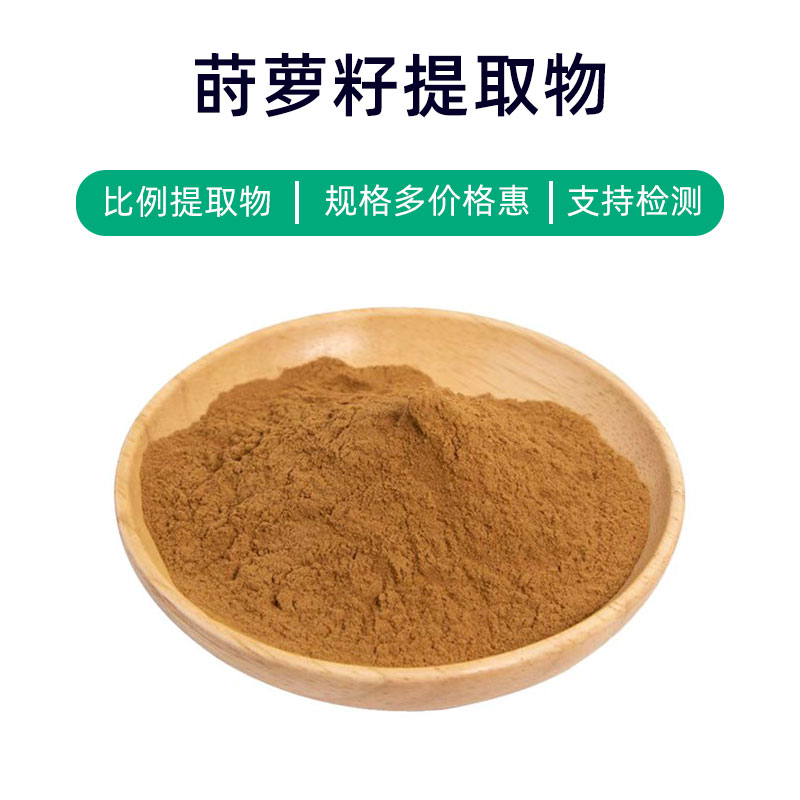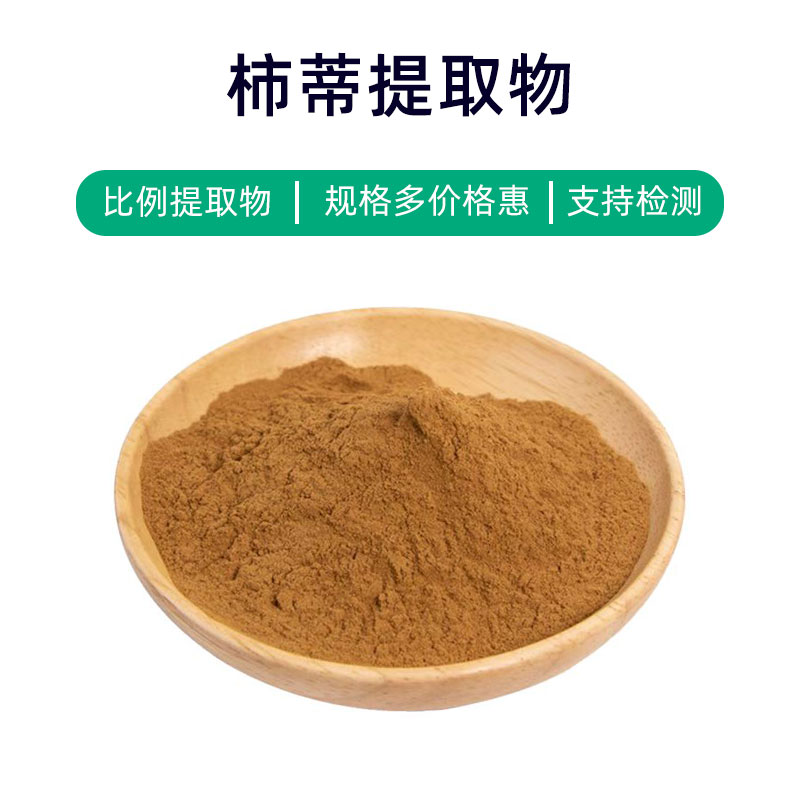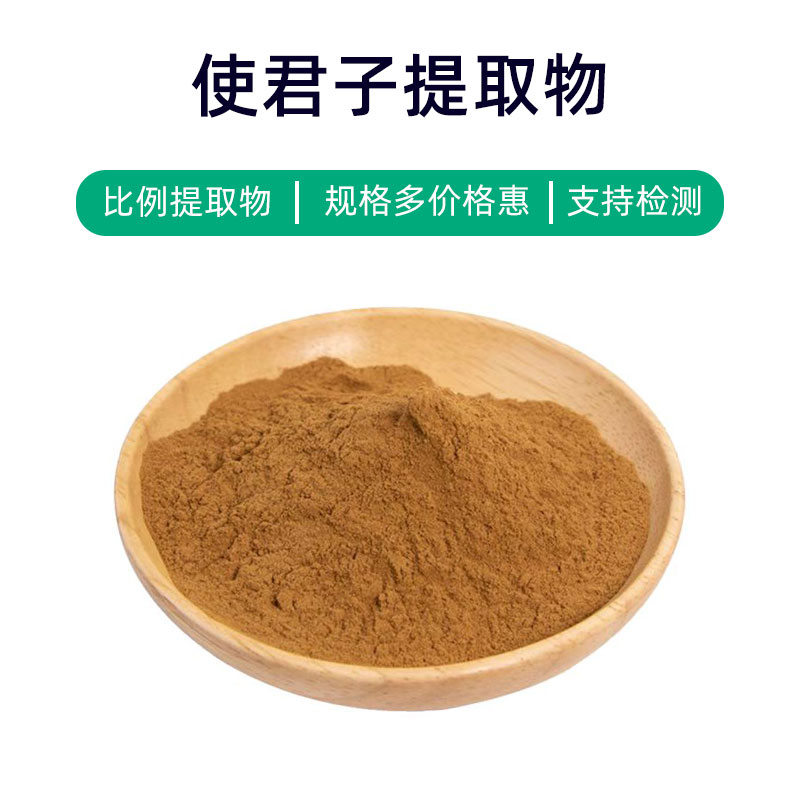Sea Buckthorn Extract Product Introduction
Sea Buckthorn Extract is a natural plant extract derived from the fruits and leaves of the sea buckthorn (Hippophae rhamnoides). Its main components include rich levels of vitamin C, vitamin E, carotenoids, phytosterols, and flavonoids, which contribute to the extract’s various benefits and applications.
Primarily, sea buckthorn extract is known for its exceptional antioxidant properties, capable of neutralizing free radicals, protecting cells from oxidative damage, and slowing down the aging process. Its high vitamin C and E content is beneficial for the skin, helping to promote collagen production, maintain skin elasticity and glow, and reduce the appearance of wrinkles and fine lines.
Additionally, sea buckthorn extract has anti-inflammatory and healing properties, making it useful in treating mild burns, wounds, and eczema. Its antibacterial properties are also prevalent in oral care products, aiding in the prevention of oral infections and bad breath.
In the pharmaceutical sector, sea buckthorn extract is a key ingredient in health products, commonly found in health beverages and nutritional supplements to boost immunity, improve digestion, and regulate blood lipids and sugar levels.
In cosmetics, sea buckthorn extract is frequently used in skincare and hair care products due to its moisturizing, repairing, whitening, and anti-inflammatory benefits, suitable for various skin types and hair textures.
In summary, sea buckthorn extract, as a natural plant extract, has wide-ranging application prospects in pharmaceuticals, health supplements, and cosmetics, providing comprehensive health and beauty benefits.
Sea Buckthorn Extract Production Process
The production process for sea buckthorn extract typically includes the following main steps:
- Raw Material Preparation: Fresh, mature sea buckthorn fruits or leaves are selected as extraction materials. These materials should undergo initial cleaning and impurity removal to ensure the quality and purity of the extract.
- Grinding and Crushing: The cleaned sea buckthorn fruits or leaves need to be ground and crushed to increase their surface area, facilitating the subsequent extraction process.
- Extraction: The ground sea buckthorn material is typically extracted using steeping or solvent extraction methods. Common solvents include ethanol, water, and acetone. During extraction, temperature, time, and solvent concentration need to be controlled to ensure extraction efficiency and the quality of the extract.
- Filtration and Concentration: The extract is filtered to remove solid particles and impurities, and then concentrated to eliminate most of the solvent, resulting in concentrated liquid extract.
- Refinement and Purification: The concentrated extract may contain certain impurities and unwanted components, necessitating further refinement and purification. This involves using various separation techniques (like gel filtration, dialysis, and vacuum distillation) and chemical methods (like crystallization and extraction).
- Drying: Finally, the purified sea buckthorn extract needs to be dried to remove residual moisture, enhancing stability and extending shelf life. Common drying methods include spray drying and vacuum drying.
- Quality Control: Throughout the production process, strict quality control measures are necessary, including testing and analysis of raw materials, intermediate products, and the final product to ensure compliance with quality standards and regulations.
These are the common production process steps for sea buckthorn extract. Different manufacturers may make appropriate adjustments and optimizations based on practical circumstances and requirements.
Effects and Side Effects of Sea Buckthorn Extract
Sea buckthorn extract is a natural plant extract derived from the sea buckthorn fruit and has various benefits and effects, including:
- Antioxidant Effects: Rich in vitamin C, vitamin E, and carotenoids, sea buckthorn extract effectively eliminates free radicals in the body, protecting cells from oxidative damage and slowing the aging process.
- Immune Regulation: Contains abundant polysaccharides that enhance immunity and regulate immune function, helping to increase resilience against infections and diseases.
- Anti-inflammatory and Antimicrobial: Active components in sea buckthorn extract exhibit notable anti-inflammatory and antimicrobial properties, alleviating inflammatory responses, facilitating wound healing, and preventing infections.
- Cardiovascular Health: Studies show that bioactive components in sea buckthorn extract protect the cardiovascular system, lowering blood lipids, regulating blood pressure, and improving cardiovascular function to prevent heart diseases.
- Blood Sugar Regulation: Polysaccharides in sea buckthorn extract help regulate blood sugar levels, improving insulin sensitivity and providing auxiliary treatment benefits for diabetes patients.
- Digestive System Protection: Natural fibers and bioactive substances in sea buckthorn extract protect the gastrointestinal tract, promoting digestion, alleviating discomfort, and preventing conditions like gastric ulcers.
- Skin Nourishment: Vitamins and antioxidants in sea buckthorn extract nourish and moisturize the skin, addressing dryness and roughness, promoting skin health and youthfulness.
- Anti-allergic: Some components in sea buckthorn extract possess anti-allergic properties, alleviating allergy symptoms and reactions, assisting in the prevention and treatment of allergic diseases.
It's important to note that sea buckthorn extract is generally considered safe as it is a natural plant extract, with few side effects. However, some individuals may experience allergic reactions, so it’s advisable to conduct a skin sensitivity test before use and consult a doctor if necessary. Additionally, pregnant women, nursing mothers, and children should seek medical advice before using it.
Application Scenarios and Dosage of Sea Buckthorn Extract
Sea buckthorn extract has wide applications in pharmaceuticals, food, and cosmetics, owing to its rich nutritional components and bioactive substances. It is commonly used in the following areas:
- Pharmaceutical Field:
- Oral Medications: Sea buckthorn extract can be used to prepare oral liquids, capsules, tablets, etc., for regulating blood lipids, lowering blood sugar, and enhancing immunity.
- Topical Medications: It may also be used in topical products such as ointments and lotions for treating skin inflammation, burns, ulcers, and other dermatitis.
- Food Industry:
- Health Foods: Sea buckthorn extract is often used as an ingredient in health foods, available in forms like oral liquids, soft capsules, and nutritional beverages to help boost immunity, regulate blood lipids, and promote digestion.
- Functional Foods: It can also be used in functional foods, such as sea buckthorn jam and juice, providing antioxidant, blood pressure-lowering, and blood sugar-lowering benefits.
- Cosmetics:
- Skin Care Products: Due to its antioxidant, moisturizing, and repairing properties, sea buckthorn extract is commonly found in skincare products like creams, lotions, and serums, helping to improve dryness and roughness.
- Beauty Products: It is also included in beauty products such as masks and essential oils, nourishing the skin, brightening skin tone, and reducing fine lines.
When using sea buckthorn extract, it’s important to follow the specific product formulation and instructions for appropriate dosage. Generally, the dosage in the pharmaceutical sector should adhere to the recommendations of a doctor or product label, while food and cosmetic applications should follow the instructions on product packaging. It’s advisable to read the product label carefully before use and adhere to instructions to avoid overdosing or misuse. If any discomfort or allergic reactions occur, discontinue use immediately and seek medical attention.
Overview of the Source Plant of Sea Buckthorn Extract: Distribution and Growth Environment
Sea buckthorn (scientific name: Hippophae rhamnoides) is a nutritious fruit tree that belongs to the sea buckthorn family and genus. The common varieties are the northern and southern sea buckthorn. Below is an introduction to both types of sea buckthorn regarding their source plants, distribution, and growth environment.
- Northern Sea Buckthorn:
- Plant Overview: Northern sea buckthorn is a species within the sea buckthorn genus, commonly found in northern China. The trees typically grow 2-5 meters tall, with dense branches and foliage, a full crown, and elongated, gray-green leaves. The small flowers are yellow-green, and the fruits are oval or oval-shaped, displaying vibrant orange-red colors.
- Distribution: Northern sea buckthorn is primarily distributed in northern China, including Inner Mongolia, Hebei, Liaoning, Shanxi, Gansu, and extends to Russia and Mongolia.
- Growth Environment: It thrives in sunny, dry climates with loose, fertile soil, is cold and drought-resistant, and can grow in sandy soils, desert areas, and high-altitude environments.
- Southern Sea Buckthorn:
- Plant Overview: Southern sea buckthorn is another type in the sea buckthorn genus, also known as Qinghai sea buckthorn. It typically grows to a height of 1-4 meters, with reddish-brown branches and long oval or long round leaves that are dark green.
- Distribution: Southern sea buckthorn is mainly found in northwestern China, particularly in Qinghai, Gansu, Ningxia, and areas such as Tibet and Xinjiang, with a wide range of altitudes.
- Growth Environment: This variety prefers to grow in mountainous areas, slopes, valleys, and meadows below 3,000 meters in elevation, requires high sunlight, is cold and drought-resistant, and favors moist, well-drained soils but can adapt to poor soil and arid climates.
In summary, both northern and southern sea buckthorn are local specialty fruit trees in China, displaying strong adaptability and tolerance for varying environmental conditions, leading to widespread cultivation and utilization within their distribution areas.
Processing and Storage of Sea Buckthorn Extract
The processing of sea buckthorn extract mainly involves the harvesting of fruits, cleaning, impurity removal, extraction, concentration, and drying. Initially, ripe sea buckthorn fruits are harvested, followed by cleaning to remove impurities before extraction. Common extraction methods include water extraction, ultrasonic extraction, and microwave extraction. The extracted liquid then undergoes processes such as filtration, concentration, and drying to yield the sea buckthorn extract. During storage, the extract should be sealed and kept in a cool, dry place away from direct sunlight and high temperatures to maintain the stability and quality of its active components. The typical shelf life of the extract is generally 12-24 months, but specific storage durations may vary based on the product formulation and processing requirements.
Monica Sun is a seasoned expert in the plant extraction industry with over a decade of experience in research and production. She specializes in the extraction and purification of plant active ingredients, focusing on driving innovation in natural product applications. Monica has participated in the development of multiple functional plant extracts, delivering high-value natural raw material solutions for the health food, pharmaceutical, and dietary supplement sectors.









